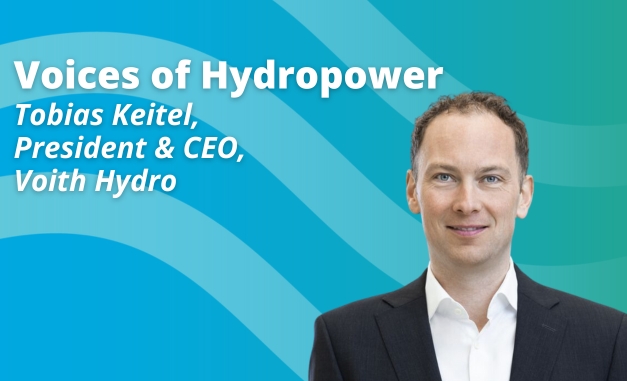Interview: Maria Van Der Hoeven, Executive Director, IEA
Maria Van Der Hoeven is the executive director of the International Energy Agency. She spoke with us about hydropower's role in the world's energy future, whether global capacity could be sustainably doubled by 2050, and challenges for governments in developing regionally.

Where do you see hydropower fitting into the world's energy future?
Hydropower is a mature technology and is the largest current source of renewable power in the world. In the medium-term, we expect total hydropower generation to reach 4,670 TWh in 2020, up from around 4 000 TWh today.
Non-OECD countries will account for two-thirds of the output. China alone should account for 27 percent of global hydropower generation by 2020, reaching almost 1,270 TWh.
Earlier this year, the IEA reported that renewables now account for 22 pre cent of the world’s electricity generation, with over £150 billion invested in 2013. However, there is concern that the pace of growth is slowing. What is your opinion about the role of incentives and subsidies?
While many renewables no longer require high economic incentives, they do need long-term policies that continue to provide a predictable and reliable market and regulatory framework compatible with societal goals.
Much greater clarity is needed around decarbonisation and environmental goals to 2030 and beyond. Market design and regulation needs to be improved, particularly in Europe.
Non-OECD countries, in particular, need to focus on removing non-economic barriers, upgrading their grids and pursuing measures to reduce the cost and increase the availability of finance.
With the energy mix changing, how might the role of hydropower evolve in future energy systems?
Over the longer term, given the inherent uncertainties about what happens in the market, and the importance of policies in determining outcomes, the IEA uses a scenario approach based on policy and market assumptions.
Regardless of whether they are large or small, or associated with a reservoir or run-of-river, hydropower projects must be designed and operated to mitigate or compensate for impacts on the environment and local populations."
The IEA’s World Energy Outlook features a scenario that shows what it will take to set the energy system on track to have a 50 per cent chance of keeping the long-term increase in temperatures to no more than 2°C.
In this scenario, hydropower use expands to 6,394 TWh by 2035. However, in a business-as-usual scenario in which nothing really changes, hydropower use only expands to 5,478 TWh by 2035.
This means that I can’t offer you a single, simple, long-term forecast. But what I can say is that if we are going to try to put the world on a more sustainable energy future, then the use of hydropower will have to expand.
Hydropower recently surpassed 1,000 GW of global installed capacity. Two years ago, in a publication Technology Roadmap: Hydropower, the IEA set a course for doubling hydroelectricity output by 2050. Do you think this can be achieved, and which markets do you see as the most important?
As you indicated, each IEA technology roadmap is not a forecast but rather shows what policies would be necessary to get a certain energy technology to a certain level by 2050.
I’d like to hope that we would see a robust increase in hydropower deployment by the middle of this century, and certainly the target in our roadmap is ambitious: more than 7,000 TWh of hydropower generation by 2050.
Obviously much of this would be in developing and emerging economies, which not surprisingly have the highest percentage of undeveloped technical potential.
Most of the growth that is targeted between now and 2050 would come from large projects in emerging and developing economies. In these countries, large and small hydropower projects can improve access to modern energy services and alleviate poverty, and foster social and economic development – especially for local communities.
With so much untapped hydropower potential in the developing world, and a rapidly growing demand for water and energy services, how can urgent development needs be reconciled with good social and environmental practices?
I must caution that our roadmap does not insist on development of hydropower projects at any cost. Quite the opposite: regardless of whether they are large or small, or associated with a reservoir or run-of-river, hydropower projects must be designed and operated to mitigate or compensate for impacts on the environment and local populations.
The hydropower industry has developed a variety of tools, guidelines and protocols to help developers and operators address the environmental and social issues in a satisfactory manner.
You have a strong background in politics, having served as minister for economic affairs in the Netherlands from 2007 to 2010, and other previous roles. What do you think will be the biggest challenges for governments in the developing world when it comes to developing renewable energy, including hydropower, on a regional scale?
It may sound counterintuitive, but the challenges faced by governments in developing countries when it comes to integrating renewables may actually be less severe than those faced by governments in developed countries. Let me explain.
The shift to greater shares of renewables has been a difficult process in some developed economies and regions – especially Europe – that have an ambitious decarbonisation agenda. In many cases in these countries, demand growth is stagnant, meaning that additional renewables take part of the pie from incumbents with established capacity. This can create economic pressure for traditional players and raises all sorts of thorny questions for policy makers: How can the old, dirty and inflexible assets be retired with priority? When infrastructure retirements become necessary, how will governments handle the distributional effects? Who will pay for stranded assets?
By contrast, developing countries – where demand for electricity is growing quickly – actually have an opportunity to avoid these problems and build a power system designed for the future. In these markets, with smart investments, a flexible system can be built from the very beginning - in parallel with the cost-effective deployment of high shares of variable renewables such as wind and solar. This is a significant opportunity for emerging economies.
For more information about the International Energy Agency, please visit www.iea.org.










